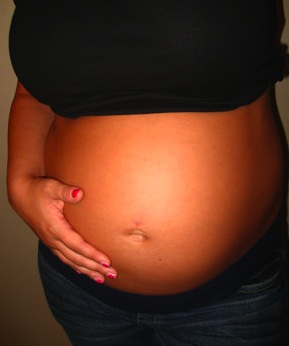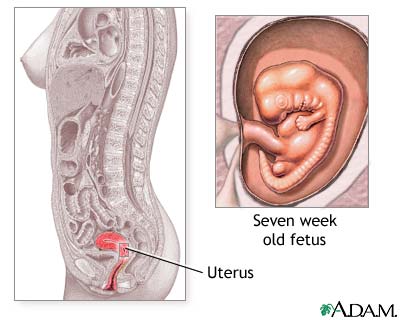Pregnancy and tanning - is it advisable?
Pregnancy and tanning can be extremely healthy for both you and your unborn child, as long as you are careful and fully mindful about how you go about it.
 Is pregnancy and tanning advisable?
Is pregnancy and tanning advisable?As soon as I fell pregnant, I became intensely focused and connected to this tiny being growing inside me. I have since learnt that my completely natural instinct to embrace the sunshine while being outdoors as much as possible, was actually a fabulous thing for both of us. The key benefit being the creation of Vitamin D of course.
However, purposely sun tanning was something else entirely to consider.
There are really 3 options for pregnancy and tanning:
- Embracing the sunshine outdoors
- Tanning salon, indoors
- Self tanner, indoors
Pregnancy and Tanning Outdoors
 Embrace the sunshine for Vitamin D
Embrace the sunshine for Vitamin DIn my opinion this is by far the best option of the three due to the simple act of embracing the goodness offered by the sunshine! Not least of all due to the fact that you will be able to produce Vitamin D, which is known as the sunshine vitamin, but also simply because it makes you feel great.
The feel good vitamin. Pregnancy and tanning = Happy mother, happy baby.
Inside your womb your child responds to the life giving forces that you are providing and being emotionally upbeat is as vital as the physical attributes offered through vitamin D.
Technically, vitamin D actually performs more like a hormone and over the last decade or more there have been an increasing number of scientific findings highlighting the extent of the health benefits it provides.
Some of these findings include:
- Reduced risk of complications
New research suggests that women who take high doses of vitamin D during pregnancy have a greatly reduced risk of complications, including gestational diabetes, preterm birth, and infection.
According to the neonatologist and study co-researcher Carol L. Wagner, MD, at the Medical University of South Carolina, women who took 4,000 IU vitamin D daily in their second and third trimesters showed no evidence of harm, but they had half the rate of pregnancy-related complications as women who took 400 IU of vitamin D every day. - Boosts immune system
Over the last decade, more and more studies suggest that vitamin D also protects against immune system disorders, plus an increasingly acknowledged number of other diseases, Wagner says. - Reduced risk of Rickets
Infants with very low vitamin D levels are at increased risk for soft bones, or rickets - a condition that is now rare in the U.S.
However, there are a worrying number of babies suffering bone breakages without any pain that seem to indicate a vitamin D deficiency or Rickets, but the parents end up being accused of child abuse. This is more prevalent amongst African Americans where Vitamin D deficiency is notably high. - Boosts babies' brain development
Vitamin D deficiency during pregnancy could hinder babies' brain development, impeding their mental and motor skills, a new study suggests.
Researchers in Spain measured the level of vitamin D in the blood of almost 2,000 women in their first or second trimester of pregnancy and evaluated the mental and motor abilities of their babies at about 14 months of age.
The investigators found that children of vitamin D-deficient mothers scored lower than those whose mothers had adequate levels of the sunshine vitamin.
"These differences in the mental and psychomotor development scores do not likely make any difference at the individual level, but might have an important impact at the population level," said study lead author Dr. Eva Morales, a medical epidemiologist in the Center for Research in Environmental Epidemiology in Barcelona.
Overall, lower scores in these tests could lead to lower IQs among children, Morales added. - Helps prevent preeclampsia
The levels of vitamin D recommended in a new study are sensible, says Michael F. Holick, M.D., a professor of medicine, physiology, and biophysics at the Boston University School of Medicine.
Previous research suggests that pregnant women who get too little vitamin D are more likely to develop life-threatening high blood pressure (preeclampsia) and are also more likely to require a Cesarean section, he says.
Vitamin D, Pregnancy and tanning
Carol L. Wagner, MD, of the Medical University of South Carolina, acknowledges the daily recommendation may be controversial because very high doses of vitamin D have long been believed to cause birth defects.
"Any doctor who hasn't followed the literature may be wary of telling their patients to take 4,000 IU of vitamin D," she says. "But there is no evidence that vitamin D supplementation is toxic, even at levels above 10,000 IU."
Based on many findings, study researchers are recommending that pregnant women take 4,000 international units (IU) of vitamin D every day - at least 10 times the amount recommended by various health groups.
Depending on your skin type, you only need 10 - 30 minutes a day in midday sunlight, to obtain the equivalent of 4000 - 5000 IU's of vitamin D.
Pregnancy and tanning is great but Don't Overdo It
So for the rest of the time spent outdoors, make doubly sure not to get sun burnt and choose a sunscreen that is non-toxic and protects you from both the UVA rays as well as the UVB rays.
Also, it is especially important to avoid excessive temperatures during your first trimester so over-doing the sunshine is a real NO.
Another area of concern where too much heat is concerned, is that later in the pregnancy cycle, excessive heat can trigger premature labour.

Pregnancy and tanning indoors
When considering tanning indoors, sun beds may be even more dangerous than previously feared.
The UVA rays, being the main type of ultraviolet light emitted by the tanning devices, has been found to cause the type of DNA damage that can lead to cancer.
(Tewari A, Sarkany RP and Young AR. UVA1 Induces Cyclobutane Pyrimidine Dimers but not 6-4 Photoproducts in Human Skin In Vivo. Journal of Investigative Dermatology, October 6 2011).
It is actually the UVB ray tanning bed that you should look for if you want to use a tanning salon when considering tanning. This means you need to look for the older type machines as they mostly use UVB rather than UVA ray lamps.
In addition, the older low density variety is better for you than the more modern, high density tanning beds as they are not so intense. It is asking for trouble if you tan under lamps that are that much stronger than the UV rays provided by the natural sun's rays.
Any damage you do to yourself, will affect your baby indirectly and there really is no telling how much, so it seems a no-brainer not to invite damage to yourself?
Pregnancy and Tanning with Self Tanners
Self tanners contain the active agent dihydroxyacetone (DHA). This ingredient works via a chemical reaction with the most superficial cells of the outer layer of your skin - the epidermis - to induce a color change.
DHA has been listed with the U.S. Food and Drug Administration (FDA) since 1973, and has been used in cosmetic preparations for almost 30 years. It is also approved as safe by the American Academy of Dermatology.
This doesn't mean you can take it at face value that all the self tanners out there are safe and healthy for your use when you are pregnant and wanting to make sure not only your child's but your own health is secure.
 The first Trimester is a time for incredible growth - a 7 week old fetus will have begun to develop all the essential organs
The first Trimester is a time for incredible growth - a 7 week old fetus will have begun to develop all the essential organsDHA is actually a colorless chemical derived from glycerin, that interacts with the amino acids in dead skin cells to produce a brown color change.
Since these dead skin cells are constantly being shed, it does not penetrate into the blood or even lower levels beneath the epidermis.
The color change produced by DHA usually lasts about five to seven days, but in some cases up to ten. Reapplication of a self tanner every few days afterwards, will maintain your bronzed appearance.
As DHA is not absorbed through the skin into the body and has no known toxicity, it is thought to be harmless for pregnant women to use if they would like to obtain a tan.
There are other ingredients in the self tan formula that you need to check out, as there are many cosmetics today that are shown to be using very unhealthy, toxic ingredients.
However, regardless of whether or not they contain toxic ingredients or not, many health care providers will encourage you to wait until after the first trimester to use a self tanner product, just to play it safe.
Pregnancy and tanning with tanning pills
Tanning pills are not considered safe for use while pregnant.
These contain canthaxanthin, which is an ingredient implicated in causing hives and drug induced hepatitis.
These pills are actually not approved for sale in the United States at all.
References for Pregnancy and Tanning
Vitamin D deficient children chronically ill
Pregnant women should get more vitamin D
Vitamin D in Pregnancy Critical for Brain Development, Study Says Babies whose mothers had adequate Vitamin D levels appeared to do better on mental, motor tests.




New! Comments
Have your say... please leave me a comment in the box below.